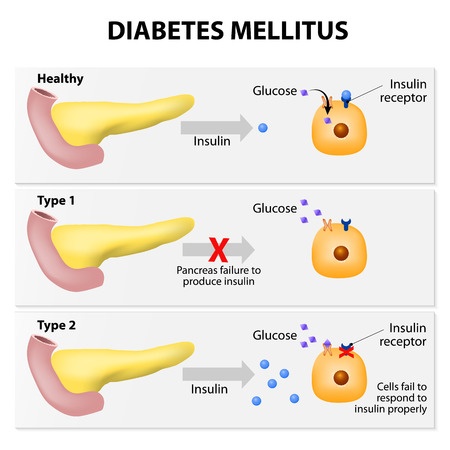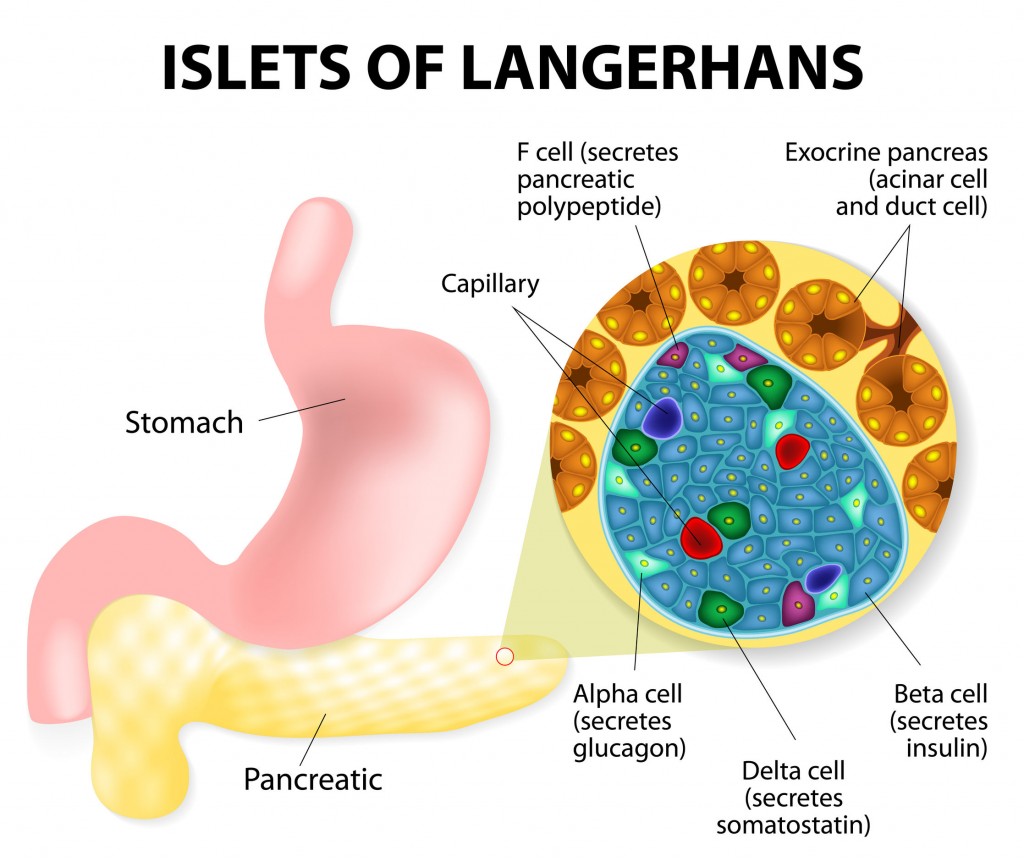What is the pancreas?
The pancreas is an organ located behind the lower part of the stomach. It is about five inches long and approximately the size of a hand.
What does a pancreas do?

A healthy pancreas makes insulin and digestive enzymes that help the body use food. Spread all over the pancreas are clusters of cells called the islets of Langerhans. Islets are made up of two main types of cells that play an important role in diabetes:
- Alpha cells, which make glucagon, a hormone that raises the level of glucose (sugar) in the blood; and
- Beta cells, which make insulin.
Types of Beta Cells Made by the Pancreas
At least five known types of beta cells in the Islets of Langerhans produce hormones that are secreted
into the blood stream:
- Alpha cells producing glucagon;
- Beta cells producing insulin and amylin;
- Delta cells producing somatostatin;
- PP cells producing pancreatic polypeptide;Â and
- Epsilon cells producing ghrelin.

The Pancreas and Diabetes
If your beta cells do not produce enough insulin, or you do not respond to insulin (insulin resistance) diabetes will develop. In type 1 diabetes, the insulin shortage is caused by an autoimmune process in which the body’s immune system destroys the beta cells. In nongestational type 2 diabetes the cause is usually a combination of genetic predisposition and an unhealthy lifestyle.



